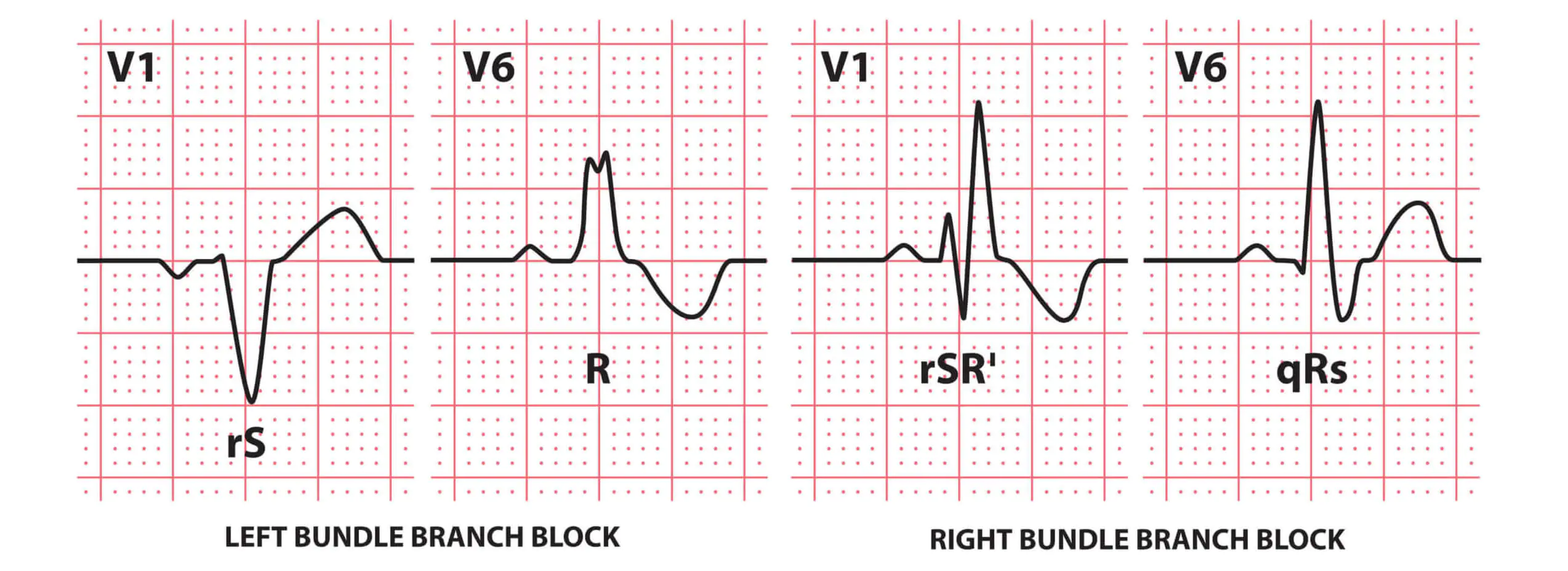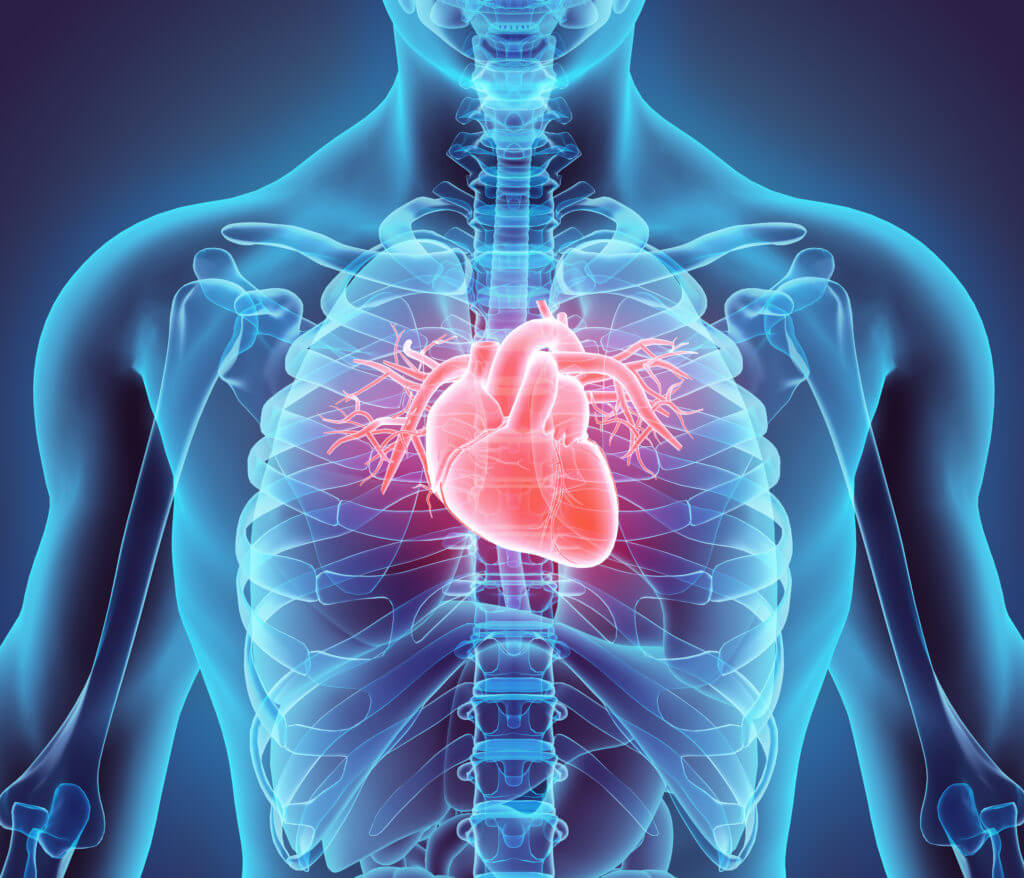FTC disclaimer: This post may contains affiliate links and we will be compensated if you click on a link and make a purchase.
If your doctor recently told you that you have a bundle branch block, you may have a serious heart condition.
Bundle branch block (BBB) results from an abnormal electrical impulse in the heart. It can be caused by various factors, including a heart attack, arrhythmia, or other medical conditions.
Bundle branch block (BBB) symptoms include an irregular heartbeat, chest pain, shortness of breath, and dizziness. If left untreated, BBB can lead to death.
What is Bundle Branch Block
A bundle branch block is an obstruction that interferes with the electrical impulses that travel through the right and left sides of the heart.
In other words, a bundle branch block is an obstruction or a delay in the pathway that delivers electrical impulses to your heart to make it beat.
The heart consists of two “bundles,” the right bundle branch and the left bundle branch, that orchestrate the heartbeat.
It can occur on either side of the heart, and it will make your heart work harder to get blood through your body.
So, a bundle branch block develops a condition when the heart’s electrical impulses cannot travel simultaneously through the heart’s right and left sides, thus decreasing output and productivity.
Heart disease is one of the problems that cause bundle branch blocks because this condition doesn’t usually show symptoms, so you could have a block and not even know it.
Understanding Bundle Branch Block Process
The heart is a conglomerate of valves, tissue, muscle, and electrical signals that all work in conjunction to pump blood throughout the body.
For blood to pump properly and evenly throughout the heart, many electrical impulses begin at the sinoatrial (SA) node.
The SA node is often referred to as the heart’s “natural pacemaker” and is situated in the top right of the heart (the right atrium).
The SA node can send anywhere from 40-80 electrical signals per minute through the heart, which allows it to beat properly.
After the SA node sends the signal, it is received by the atrioventricular (AV) node. After the impulses travel through the AV node, they travel along with the Bundle of His (named after the Swiss cardiologist it was discovered by).
The Bundle of His separates the right and left side into two branches (the bundle branches), which ultimately leads the impulses to the bottom chambers of the heart.
These impulses travel simultaneously through both the right and left sides of the heart and are the mechanism that regulates the heart’s rhythm and leads to the heart’s pumping action.
Throughout this activity, the most important aspect is that the electrical impulses must travel simultaneously through the right and left sides, not separately.
A bundle branch block, on either the right (right bundle branch block) or left (left bundle branch block) side, means there is an obstruction, and the impulses cannot flow simultaneously.
Another important aspect is that a right bundle branch block and a left bundle branch block indicate different issues.
As is true with all matters of the heart, a bundle branch block must be taken seriously, and if a person suspects they have a bundle branch block, it is highly recommended they visit a physician.

Symptoms of Bundle Branch Block
If you experience the following symptoms, see a doctor as soon as possible: fainting; slow heart rate; and feeling as if you are going to faint.
These three symptoms may not be due to a bundle branch block, but it is better to be safe than sorry.
If you have been diagnosed with this condition, carry a medical alert card stating that you have a bundle branch block.
This will help you if you are ever seen in an ER by someone who does not know your particular medical history.
Causes and ECG test for Bundle Branch Block
Anyone who has suffered a heart attack may develop a bundle branch block. They also have a higher risk of complications or death due to the condition.
It will make diagnosing other heart problems more difficult for your physician. If your doctor is unsure what is causing your heart problems, they may request an ECG test to determine what is happening.
The test will show abnormalities in how your heart functions and will pinpoint which side of your heart the block is on.
Treatment of Bundle Branch Block
Heart conditions that cause a bundle branch block can be treated using medication and procedures such as coronary angioplasty.
In some cases, a pacemaker may be required to regulate your heartbeat and keep your body functioning at its optimal pace.
Depending on the severity of the bundle branch block, a stent may be needed to help open the blockage to keep your heart working normally without requiring more invasive procedures.
If you think you have heart problems or have been diagnosed with a bundle branch block, make sure you see your doctor regularly to treat the underlying condition that has caused it.
Can you live with a bundle branch block?
A healthy person can live with this condition for years; they can even be born with it.
However, if it is left untreated, complications will arise. Work with your doctor to care for your heart to avoid heart attacks and other types of heart disease.
You can continue living with a bundle branch block for many years with the right treatment, medication, and a healthy diet.
The Bottom Line
Bundle branch block is a serious condition that can cause several health complications. If you are experiencing any symptoms, it is important to seek medical attention immediately.
Treatment for bundle branch block typically involves medications and lifestyle changes. With early diagnosis and treatment, most people can live healthy lives.








